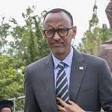Standard and Poor’s confirmed its long and short term sovereign credit rating on Rwanda at ‘B+/B’. The outlook nonetheless remains negative, S&P said in a February 4, 2022 report. The negative outlook continues to reflect that Rwanda’s economic growth model, based on investment and debt, and structurally large current account deficits could exacerbate the fiscal vulnerabilities.
“We expect Rwanda’s economic growth over the period 2022-2025 to remain above that of its peers with a similar rating,” S&P says. In 2021, the Rwandan economy rebounded from the COVID-19 related recession, supported by the government’s economic stimulus package and a rebound in domestic activity, with real GDP growth estimated at 10.0% and exceeding pre-pandemic levels. “Public investment will likely continue to be a key driver of growth and will require a strong import component for infrastructure projects.” This will, however, S&P believes, translate into large current account deficits averaging 10.5% of GDP in 2022-25, according to our estimates.
Fiscal consolidation is expected to occur only gradually over the medium term and net public debt will remain high at around 72% of GDP in 2022-25. These factors will further affect the country’s external balance sheet through 2025. Positively, ongoing economic and development reforms are expected to gradually lift private sector activity from its weak base, while environmental policies are expected to improve resilience to the climate change over time. “A key assumption in our base case scenario is that a large, albeit steadily declining, portion of fiscal deficits will be financed from long-dated concessional sources, keeping financing costs low,” he said. the S&P report. Nevertheless, say the analysts, “our view of Rwanda’s credit quality remains limited by the country’s GDP per capita below $1,000, which is one of the lowest among countries rated by S&P.” The country is expected to achieve growth of 6.5% in 2022 and 7.4% over the period 2023-2025.



